The first time I reviewed a robot vacuum cleaner, it was the Roomba — in 2003. My daughter was 4 years old. She brightly informed me that this thing should be called a Broomba, not a Roomba. Because “it’s an electric broom, not an electric room!”
Back then, there was nothing like it: A weird, round disk, 4 inches high and 14 inches across, that could vacuum your bare floors and carpets all by itself. It was amazingly entertaining to watch, especially if you were a cat.
Roomba busily scuttled under furniture, comically backed off from collisions, and drove an unpredictable path through the room that seemed logical only to its own little robot brain.
In the ensuing 12 years, the Roomba has picked up a long list of improvements. And it became surrounded by competitors. All of them cost less than the Roomba, sometimes a lot less.The question is: Can any of them beat its price/performance standard?
As it turns out, yes.
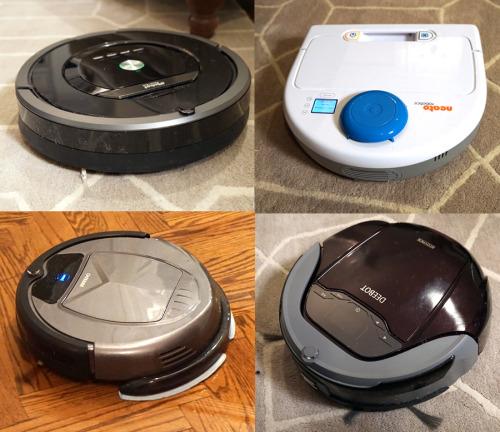
The lineup
There aren’t enough floor tiles in my state to accommodate all of the robovacs on the market. I rounded up four of the best reviewed, fromiRobot, Neato, Infinuvo, and Ecovacs. Their prices range from $400 to $700, but keep in mind that my quest was to find the best robovac. I asked each company to loan me its top-of-the-line model. (Bottom-of-the-line robovacs cost as little as $250.)
Here’s what they sent:
- iRobot: Roomba 880
- Neato: Botvac 85
- Ecovacs: Deebot D77
- Infinuvo: Hovo 650
Each robot comes with a little home base/charger. Incredibly, when these robots are finished cleaning a room or running low on battery power, they drive themselves back to the base, nuzzle up to it, and park for the night.
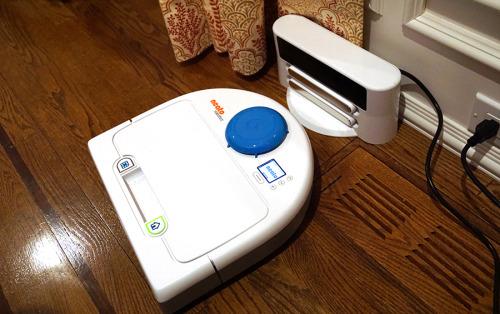
You read that right: These robots plug themselves in to recharge.Surely it won’t be long before they become self-aware and begin raking, folding laundry, and unloading the dishwasher.
These vacuums can’t clean stairs, but at least they don’t go plunging over them, either, thanks to built-in infrared “cliff sensors.”
The iRobot Roomba and Infinuvo Hovo each come with what looks like a little black pencil sharpener. It’s actually a battery-powered, invisible barrier, which shoots out an invisible, infrared beam that its robot won’t cross. That’s how you confine your robovac in one room.
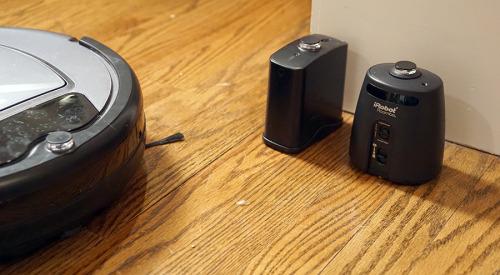
All but the Neato Botvac come with a little plastic remote control, too. Rationally, you don’t need one; the whole point of these robots is that they’re automatic. You’re supposed to schedule them to vacuum your whole place while you’re away, so that everything’s gleaming and clean when you come home; what good would a remote do you?
But people are people, and they like to take control even when they know that the robot would be better off left alone. Thus the remote.

All four product manuals emphasize that you shouldn’t drive the robovacs over wet floors and that you should clear the room of toys and wires before you begin using them. Each robot runs for 60 to 90 minutes on a charge.
So yes, in many ways, these robovacs work alike and look alike. They’re much quieter than actual vacuum cleaners, they’re objects of fascination for cats and dogs, and — expectations set? — they don’t do quite as good a job at cleaning as a human being would.
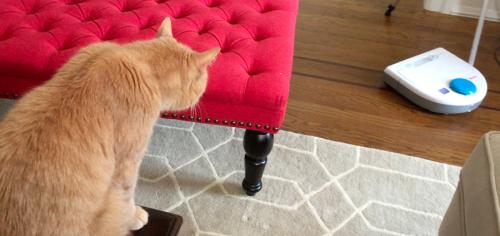
But as the competition has heated up, these companies have cultivated some unique, eyebrow-raising features all their own. Here is a mini-review of each of the four contenders.
Roomba 880 ($700)
The company iRobot has a division that makes bomb-sniffing and search-and-rescue robots for the military. It has the longest track record in robovacs for consumers (and robotic moppers, mowers, and gutter cleaners). You’d expect it, therefore, to have the vacuuming edge in this roundup.
And it does. The Roomba is the best navigator of the four vacuums; it didn’t get stuck even once in my minefield of a living room. Or, rather, it did, but only briefly — then it shook off the obstruction, backed up, and chose a different path.
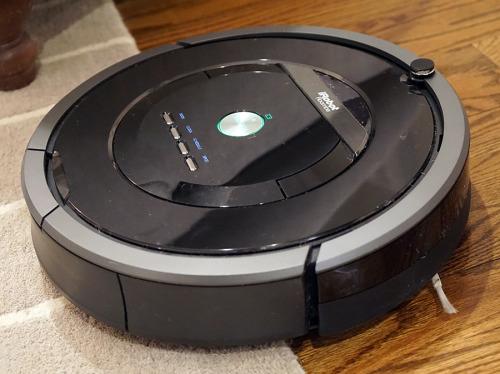
The cleaning is excellent, on carpets, bare floors, and the transitions between them. Its path appears to be random — it cruises along a wall, for example, and abruptly turns and darts into the middle of the room. Or it will zigzag across a spot it considers worthy of more attention.
If you just go away and let it finish, you’ll find that it has indeed swept the whole room. But clearly, it drives people crazy that the Roomba’s path isn’t more comprehensible, which is why rival Neato did something about that (read on).
The design is dark, high-end, and high-tech. A central Clean button is the sleep/wake switch; punch it twice to make it start cleaning the whole room. Below that, you’ll find small silver buttons for Dock (“find your way home and recharge yourself”), Clock (sets the clock), Schedule (program automatic cleanings), and Spot (circle around a particularly grubby area).
The Roomba 880’s sweepers are rubberized cylinders, not the usual vacuum cleaner-style brushes. The advantage here is that you never have to spend time unraveling cat hair from bristles. They work great.
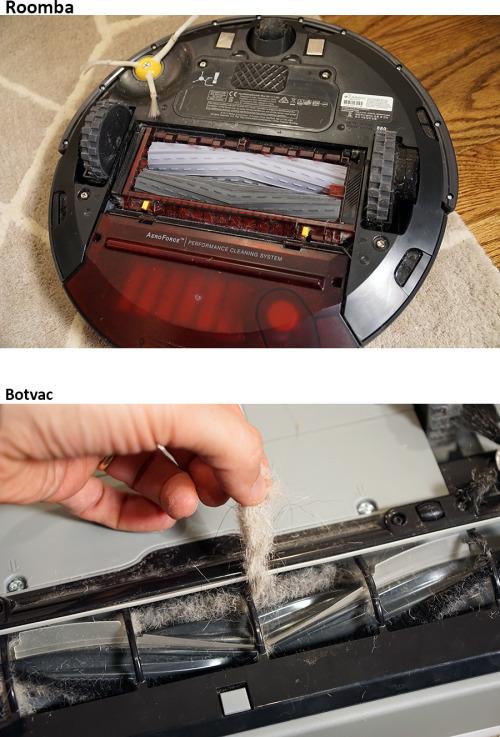
The 880 comes with two of those infrared-beam doorway-blocking things. But on the Roomba, these terminals have a switch that lets you choose either Virtual Wall and Lighthouse. The Lighthouse function guides the Roomba to a second room when the first one is clean — a handy option that nobody else offers.
Neato Botvac 85 ($500)
This robot is the bad-boy rebel of robovac designs. It’s white, for one thing. And it’s not round; it’s D-shaped. The company says that the two corners are better for cleaning along walls and in corners.
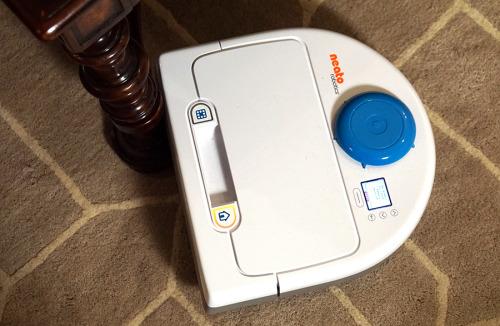
That’s not necessarily true. The Roomba, for example, is round, but its funny little spinning brush protrudes well past the curved case and allows for cleaning near walls and corners.
The Neato company also touts its “laser scanning” technology: When you turn the thing on, it takes a few seconds to scan the room (“using the same technology on Google’s self-driving cars!,” exclaimed a PR rep). Then it’s supposed to drive a more comprehensible, straight coverage path — more like how you’d mow a lawn than the random-looking zigzags of the other robovacs.
That’s not necessarily true, either. In a room full of furniture, the Botvac does plenty of weird circling and doubling back. Meanwhile, you’re advised not to move anything in the room once the vacuuming begins, for fear of messing with the robot’s hard-won conception of your layout.
In other words, it’s not clear that either of Neato’s big breakthroughs actually gains you that much.
But what’s also clear is that the Botvac cleans as well as the Roomba. Its dustbin is incredibly easy to access and empty, and it’s the largest on the market — a welcome detail.
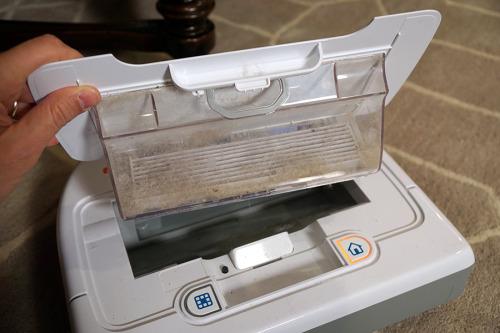
Above all, Neato’s Botvac costs hundreds of dollars less than the Roomba. The top-of-the-line model 85 costs $500 (compared to Roomba’s $700). And here’s a little tip: The only thing that differentiates the various Neato models is the accessories that come with them (filters and whatnot), which you can also buy later. And Neato models start at $260.
Neato’s Botvac doesn’t come with a remote control. It doesn’t come with an infrared-beam terminal, either, to confine the robot to one room. (Instead, you’re supposed to lay down a heavy magnetic strip across the room opening; you get 13 feet of it.) And its plasticky design seems to have been inspired by a late ’80s game console.
But you might learn to live without those extras as you admire the crisp $100 bills that are still in your wallet.
Ecovacs Deebot D77 ($700)
In its attempts to differentiate itself, this vacuum goes in a direction nobody else has dared to go: up.
The Deebot’s recharger/home base is far more noticeable than its rivals’, because it has a secret power. When the robot trundles back home to charge, it empties itself. That big, clear cylinder above it turns on and sucks all the dirt, dust, and grit out of the robot. That’s correct: This robot recharges and empties itself. (You still have to manually pull out hair and Cheerios occasionally.)
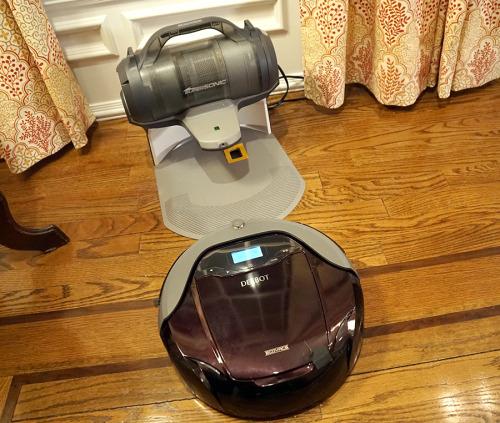
Cleverer yet, that cylinder detaches (with a press of a gray button situated, unfortunately, on the wall side, where you can’t see it). You can then snap the cylinder into a half-sleeve thing that plugs into the wall and turns the whole thing into — a handheld vacuum!
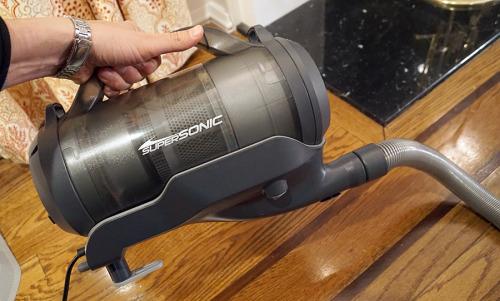
The Deebot is, in other words, two vacuums in one: a robot for the floors and a handheld for stairs, curtains, and other higher-up surfaces. You get a bunch of hoses, extensions, and end-piece accessories for the handheld.
It’s a great idea. It’s also a bit of a pain to assemble and disassemble every time you want to use the hand vac.
Worse, the robot does a terrible job of vacuuming carpet. (Our video crew joked that of course this product comes with a hand vacuum — you’ll need it to clean up after the robot!)
And the Deebot doesn’t come with any kind of barrier — no infrared beam, no magnetic strip. So if you want it to stay in one room, you’ll have to pile up boxes or furniture to block it.
Infinuvo Hovo 650 ($400)
The Hovo is inexpensive. But its dustbin box is microscopic — my cat’s sheddings from a single lunch hour could fill it up.
It’s also really dumb. (The robot, not the cat.)
The first big problem is that it gets stuck constantly — on rugs, on furniture, even in corners. Here it is, bumbling dumbly over and over again into the same corner (I finally had to pick it up and move it):
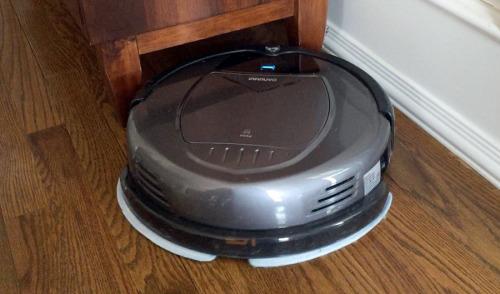
Anyone who has nightmares of robots becoming smart enough to turn on us is invited to watch this dimwit for a few minutes.
You should also know that this vacuum has only a tiny sucking hole on the bottom (It’s the yellow slot you can see two photos down from here). It doesn’t have any kind of rotating brush cylinder, like the others, so it doesn’t pick up as much.
The Hovo’s singular feature is its semicircular snap-on, mop-pad attachment. You can pour water or cleaning solution into its reservoir, snap it onto the robot, and marvel as it drives around on your bare floor, leaving a wet trail as it goes.
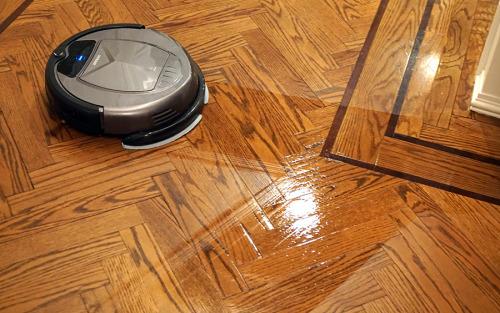
The entire “system” is basically a piece of damp carpet dragging across the floor, so it’s not clear how much cleaning is actually getting done. But if your expectations are low, you might be pleased enough.
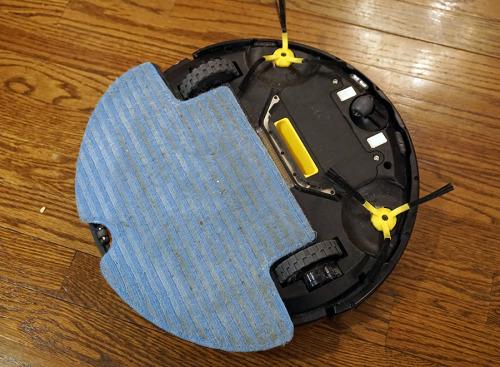
Robot wars: The verdict
There are really two questions here. First, is a robovacuum worth getting? Will it really keep your house cleaner than it is now, or will the robot wind up in the junk closet?
There’s no doubt: A human pushing a vacuum can clean floors faster and better than a robovac can. But having to be that person, or hirethat person, is a considerable drawback of this approach.
From that perspective, a robovac is indeed a worthy investment. It charges itself; it runs by itself on a schedule you choose. So if it’s reliable, you’ll come home to find your place pretty well vacuumed up without any effort on your part (except remembering to empty the dust container).
If you didn’t have to pay for your robot vac, the Roomba would win this battle. Its navigation and cleaning are the best, its software and programming the most sophisticated, and its infrared terminals the most versatile.
But it’s not $200 better than the Neato. The Botvac series is very smart, rarely gets hung up, cleans well, and is a snap to use. Its laser room scanner isn’t as good at navigating as Google’s self-driving car, but hey — Google’s car isn’t such a great vacuum cleaner, either.


Post a Comment